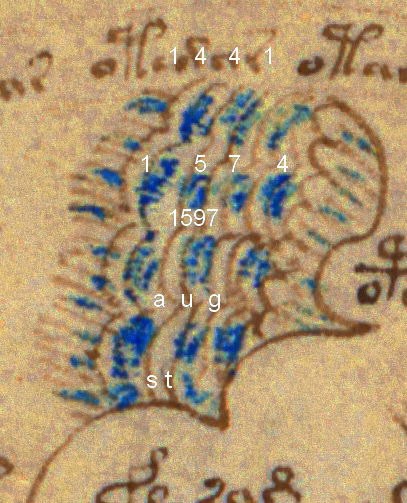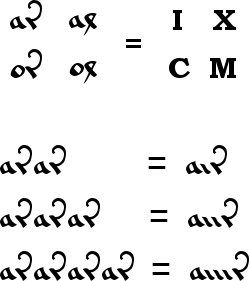Even though the Internet would appear to be full of Voynich theories, Tardis-like there’s always room for just a few more: so here are some recent ones for you to feast upon. Today’s mission, should you choose to accept it, is simply to try to categorise them: satirical, apparently deranged, serious, April Foolery, brilliant, channeled, etc.
- Well-known Internet palaeographer (and Australian donkey-owning grandmother) Dianne Tillotson has a theory that the VMs was written by one Leonard of Quim.
- Online Shakespearean theorist Franz Gnaedinger has raised Richard SantaColoma’s theory to dizzying new heights: he believes the VMs “was written and drawn by Francis Bacon in 1622, as a private sequel to the highly successful Nova Atlantis, written in a pseudo-Polynesian idiom allowing page-filling automatic writing, and drawn in a deliberate retro-style honoring Francis Bacon’s ancestor Roger Bacon. The text is gibberish but makes allusions.“
- Sergey K suggests (by email) a new chronology for the Voynich Manuscripts, based on some dates apparently marked in blue paint in the SW rosette: “1441 dates of the making of the Voynich MS. 1574 JOHN DEE has bought the Voynich MS. 1597 (in this place my monitor very dirty) August. The Year and month when Edward Kelley has finished the painter (colouring) of the book and run out from the prison.“

- Chy Po, who has been studying the VMs for many decades, believes that “The sketches are Red Herrings & have nothing to do with the text, however they tell a tale of their own cautioning people not to be misled“, while the text is in “a Secret almost extinct language, perhaps impossible to crack as it is a variation of a One Time Pad.” However, “the name of this language is known to very few who guard it jealously, but even is was made public it would be of no help without those exact pages of the Pad which obviously cannot exist still. I have strong suspicions that it is a copy of an handwritten book called “v**z H******g’ very few copies of which exist to be passed on to the next worthy disciple, if no one is deemed to be worthy then that particular copy is destroyed.“
Here, the satirical is clearly (1) [Leonard of Quim is an Ankh-Morpork character], the April Foolery is (3) [thanks for that, Sergey], while (2) bravely outdoes his virtual mentor Rich SantaColoma by a whole order of magnitude. As for Chy Po, perhaps the answer to the VMs, when it eventually arrives, will indeed fit this kind of “concealed secret language” template, who knows? But as to whether the book in question is called “vuoz Habsburg” (or whatever), you’ll have to work out for yourself.
Really, who would be me? Some days, I have to admit that not even I would be me.
